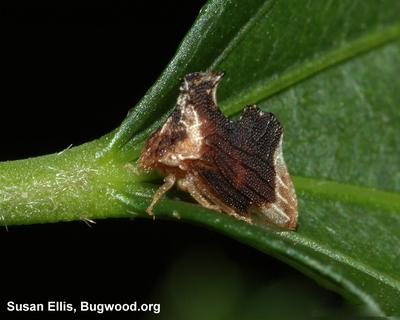Cowbugs
Membracidae
Insect
In a Nutshell
- Corky calluses on stems.
- Wilted plant.
Can also be found in
Symptoms
Corky calluses are formed on the stem due to the sap sucking of the bugs. Feeding marks can be seen on stems. The affected part dries up and defoliates if infestation is severe. The plant appears wilted and has reduced vigor. Foliar distortion can be noticed due to the sucking of cell sap and injection of toxins through saliva by the insects. In addition to this, sooty mould, Capnodium spp., develops on honey secreted by cow bugs on plant parts which results in the production of poor quality of leaves. The bugs usually sucks from the green stems. Heavy infestations can result in the formation of corky calluses, wilting and reduced plant vigor.
Recommendations

Organic Control
Parasitoids may be able to kill the eggs of cowbugs. To this day, we are not aware of any biological control method available against this pest. If you know of any successful method to reduce the incidence or the gravity of the symptoms, please contact us.

Chemical Control
Always consider an integrated approach with preventive measures together with biological treatments if available. Dimethoate at 2 ml/l of water is used to manage the pest population.
What caused it?
The damage is caused by the nymphs and adults of the Membracidae family, including Otinotus oneratus and Oxyrachis tarandus. Other names for these insects are tree hoppers or thorn bugs. The gray-brown, winged bugs are ca. 7 mm long, with thorn-like projections on the thorax. The female lays the eggs in irregular clusters on the stem or twigs. They live in a mutualistic relationship with ants. Nymphs are exuding honey dew which is eaten by the ants, which in return protect the bugs off natural predators. The pest population is favored if the temperature drops and humidity rises.
Preventive Measures
- Monitor your field for signs of infestation.



